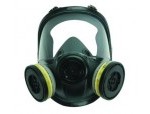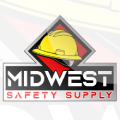Professionals working in specific industries like petrochemicals have to work in hazardous environments on a daily basis. One of the most common types of equipment that the industrial workers use are Respirators. So how would you, as a factory owner decide the exact type of respirator that your staff would be using?
 First and foremost, you need to determine the type of hazard and airborne concentrations that require prior adjudication before selecting a Respirator. The assessment needs to be performed by a well-groomed safety personnel.
First and foremost, you need to determine the type of hazard and airborne concentrations that require prior adjudication before selecting a Respirator. The assessment needs to be performed by a well-groomed safety personnel.
After the workplace assessment gets done, and engineering controls are put in place, you should start the process of Respirator selection.
Filtering face-piece respirators are disposable devices that are meant only for use only once. They are used for filtering out only a particulate matter. Disposable air-purifying respirators are meant for use once or till the expiry of the cartridge. Cartridges are attached permanently and do not have any replacement parts.
Gas masks are designed particularly for the higher concentration of gases, mists, dust, fumes and organic vapours. The amount of sorbet used as medium is higher than a chemical cartridge. Reusable air purifying respirators utilize both parts as well as replaceable cartridges. These respirators can either be full face or half mask respirators. But keep one thing in mind. You should acquire replaceable parts and cartridges from a single manufacturer so as to retain an NIOSH approval.
Gas masks are developed for higher concentrations of mists, fumes, gases and organic vapors. The amount of sorbent that is used as the medium is higher than a chemical cartridge. Fire can break out at any time and, therefore, using emergency escape breathing apparatuses is essential. They offer 5-15 minutes based on a unit’s age. Once your workforce is equipped with these apparatuses, they will easily be able to escape easily to safer places.
Respirators are produced from a wide range of materials. Widely used face piece materials that are used in the manufacturing process include silicone, rubber and neoprene. As compared to others, rubber and neoprene are tough, long lasting materials. Silicone is highly valued because it is flexible and easy to clean. Ratchet suspensions and six-strap harnesses are a common feature of full face Respirators. They usually come with ratchet suspensions that can be adjusted easily, making them easier to use.
Respirators come with different features to help users modify them to satisfy employees and safeguard against certain hazards that they could face. For instance, to protect the lens from paint, lens covers can be used. Similarly, to minimize lens fogging you could use nose cups and lens covers.
If you want to use a prescription corrective lens, you will require appropriate spectacle kits. This frame can be mounted onto the full-face masks; the wearer's optometrist develops the prescription lenses. This will allow your employees to have a proper fit while using prescription lenses.
To find out the proper cartridge for air-purifying respirators, you can either take the help of a safety professional or a Material Safety Data Sheet of the substance that requires filtering. All cartridges are offered a color denoting contaminant type they will filter.



